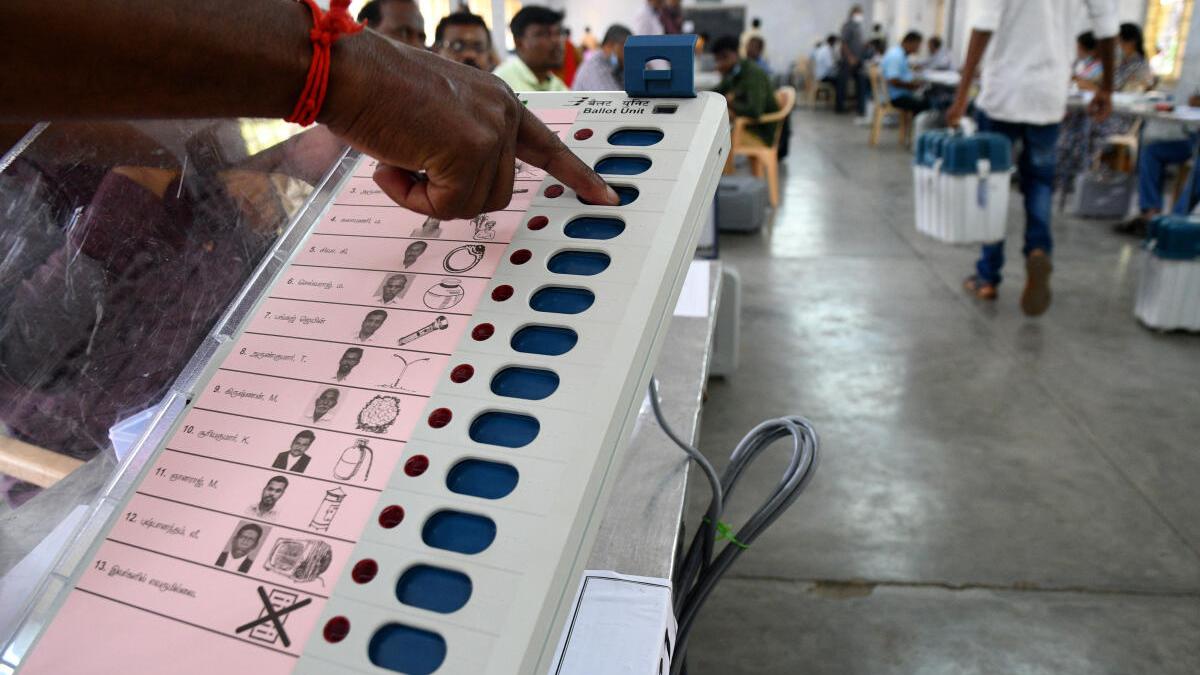
Why ‘one nation, one election’ would strike a blow against federalism | Data Premium
The Hindu
The Indian government has formed a committee led by former President Ram Nath Kovind to explore the possibility of conducting simultaneous elections for various levels of government, including Lok Sabha, state assemblies, municipalities, and panchayats. If simultaneous elections are implemented, it would curtail the terms of most Legislative Assemblies, with the exception of four states - Andhra Pradesh, Arunachal Pradesh, Odisha, and Sikkim. These four states already have their election cycles synchronized with Lok Sabha elections. India currently elects a significant number of representatives at different levels: 543 Lok Sabha members, over 4,100 Assembly legislators, representatives for 89,194 urban wards, and nearly 31.89 lakh elected panchayat representatives across three tiers of the Panchayat system. Each of these tiers has specific roles and responsibilities, reflecting the diverse needs of voters. Simultaneous elections might lead to all these different issues being grouped under a single election mandate, potentially undermining federalism and the structure of the three-tier governance system. This aspect of Indian democracy needs careful consideration by the committee.
The Union government has constituted a committee headed by former President Ram Nath Kovind to explore the possibility of conducting simultaneous elections to the Lok Sabha, the Legislative Assemblies, municipalities, and panchayats. The idea of simultaneous elections has been discussed in the last five years or so, and is part of the Bharatiya Janata Party’s manifesto.
The next Lok Sabha election is due to be held before June 16, 2024. If the simultaneous elections idea bears fruit and is ratified and implemented, this would curtail the terms of all Legislative Assemblies barring those of four States — Andhra Pradesh, Arunachal Pradesh, Odisha, and Sikkim. The election cycles for these four States have coalesced with elections to the Lok Sabha over time. If simultaneous elections are held in 2029, it would require a similar exercise of curtailment or extension of Assembly terms.
Table 1 shows when the term for the Assemblies of each State ends, and the number of months that would be curtailed if simultaneous elections are held in these States in June 2024.
Chart appears incomplete? Click to remove AMP mode
As the table shows, 17 States would see their Assembly terms being truncated by close to a year and a half, with the terms of the Assemblies of Karnataka, Meghalaya, Nagaland, Tripura, Himachal Pradesh, and Gujarat being truncated by close to three and a half years or more.
The government has touted the need for simultaneous elections as a cost-saving exercise. A report by the Law Commission in 2018 stated that the expenses for Lok Sabha and Assembly elections in any State are more or less the same. It argued that conducting elections together would reduce the costs by half. However, reports such as this treat election expenditure as “wasteful”, disregarding the multiplier effect and the economic impact of conducting elections on sectors such as transport, printing, media, and infrastructure.
Many such reports also do not consider the import of simultaneous elections on the specificity of the legislative and governance tiers in India. Cumulatively, India elects 543 Lok Sabha representatives, more than 4,100 Assembly legislators, representatives to 89,194 urban wards, and nearly 31.89 lakh elected panchayat representatives spread across three tiers of the Panchayat system — village panchayats, panchayat unions, and district panchayats. Each of these tiers has its own roles and responsibilities. The sheer number of representatives across the three tiers points to the importance of each tier and the need for contestation to cater to the specific needs of the voters.

Capt. Brijesh Chowta, Dakshina Kannada MP, on Saturday urged Union Finance Minister Nirmala Sitharaman to facilitate speeding up of ongoing critical infrastructure works in the region, including Mangaluru-Bengaluru NH 75 widening, establishment of Indian Coast Guard Academy, and merger of Konkan Railway Corporation with the Indian Railways.










